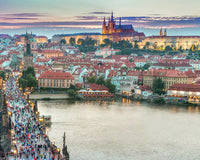Stockholm, the capital of Sweden, is a must for travellers in search of Scandinavian charm. Nicknamed the ‘Venice of the North’, this city is built on 14 islands linked by bridges, the Stockholm archipelago, offering sublime scenery around every corner.
With its rich history, innovative modernity and green spaces, Stockholm has something for every type of visitor. In this guide, discover the must-sees, the best things to do and practical tips for a successful stay in this unique city.
What to visit in Stockholm
Ah Stockholm, Stockholm... the pearl of the Baltic Sea and a must-visit city that attracts its fair share of visitors every year. From its lively city centre to its historic monuments, we'll guide you through the best places to visit.

Gamla Stan, the old town
The historic centre of Stockholm, Gamla Stan is one of the largest and best-preserved medieval centres in Europe. This maze of cobbled streets, lined with colourful buildings dating back to the Middle Ages, is a real treat for history buffs.
As you stroll through its narrow streets, you'll discover charming craft shops, typical cafés and restaurants serving traditional Swedish cuisine. One of the must-sees is Stortorget square, the focal point of Gamla Stan and home to the famous colourful houses. This is also where you'll find Storkyrkan, Stockholm's cathedral, famous for its statue of St George slaying the dragon.
Access to Gamla Stan is free, but entry to some historic monuments, such as Storkyrkan Cathedral, costs around €5 per adult.
The districts of Södermalm and Östermalm
Stockholm is a city of contrasts, and its districts reflect this diversity. Södermalm, in the south, is a vibrant district that is increasingly attracting young creators, artists and designers.
Its vintage boutiques, trendy cafés and art galleries make it a unique place, where you can also enjoy superb views over the city from the heights of Monteliusvägen. It's an ideal district for those who like to bargain-hunt or soak up the city's alternative atmosphere.
On the other side of the city, Östermalm is the epitome of elegance. This district is renowned for its luxury boutiques and gourmet restaurants. You'll also find the famous Saluhall, a covered market where you can sample Swedish specialities in a refined setting. For lovers of high-end shopping or architecture, a stroll through the streets of Östermalm is a must.
These areas are free to visit, but you should budget for shopping and eating out, especially if you want to have lunch at the Saluhall, where a meal costs an average of €15 to €25 per person.
Drottningholm Castle
Located around twenty kilometres from the centre, Drottningholm Castle is the private residence of the Swedish royal family. This baroque palace, a UNESCO World Heritage Site, is a real architectural gem.
You can visit the sumptuous royal flats and the Drottningholm Royal Theatre, one of the oldest theatres in Europe still in operation. The Chinese Pavilion, located in the gardens, is also a must-see for its unique architecture and exotic atmosphere. The vast gardens surrounding the castle are perfect for a peaceful stroll.
To get to the castle, you can take a boat from Stockholm, an excursion that gives you a great view of the surrounding islands. Admission to the castle costs around €13 per adult, with reduced rates for students and children. A visit to the Chinese pavilion costs a further €6.
The Royal Palace (Kungliga Slottet)
In the heart of Gamla Stan, the Royal Palace is one of the largest palaces still used by a royal family in the world. With over 600 rooms, the palace is a veritable fortress of Swedish history.
You can visit several parts of the palace, including the sumptuously decorated royal flats and the royal treasury, where the crown jewels are kept. The Tre Kronor museum tells the story of the medieval castle that once occupied this site. The changing of the guard, which takes place every day, is a spectacular moment not to be missed.
Admission to the Palais Royal costs around €13 per adult. The ticket includes a visit to the Royal Apartments, the Tre Kronor Museum and the Royal Treasury. Admission to the Changing of the Guard is free, but it is advisable to arrive early to get a good seat.
When is the best time to visit Stockholm?
Choosing the right time to visit Stockholm can turn your stay into an unforgettable experience. The Swedish capital offers unique charms in every season, but the climate and activities vary considerably depending on the time of year. Here's a guide to the best times to make the most of your trip.

Spring (March to May)
Spring is one of the most pleasant times to visit Stockholm. Temperatures start to warm up, between 5 and 15°C, and the city wakes up after the winter. Parks and gardens fill with flowers, creating a soft, colourful atmosphere.
It's also a time when tourists are still few and far between, which makes visiting the main monuments more enjoyable. A stroll through the Djurgården park or a visit to Skansen, the open-air museum, is particularly pleasant in the spring sunshine.
Summer (June to August)
Summer is undoubtedly Stockholm's favourite time of year. The days are long, with sometimes up to 18 hours of daylight, thanks to the phenomenon of the midnight sun. Temperatures generally range between 20 and 25°C, perfect for exploring the city on foot or by boat.
Summer is also the time when many festivals take place, such as the Stockholm Jazz Festival and the Festival of Culture. Green areas such as the island of Djurgården and the Tantolunden park are popular for picnics and swimming.
However, this is also the peak tourist season. Hotels and attractions can be more expensive, and some tourist areas more crowded. It is therefore advisable to book in advance to avoid any surprises.
Autumn (September to November)
Autumn is a lovely time to visit Stockholm if you like a quieter, more melancholy atmosphere. Temperatures start to drop (between 5 and 15°C), and the city is decked out in magnificent autumn colours.
The surrounding parks and forests are sublime, particularly on the island of Djurgården and in the gardens of Drottningholm Castle. It's also a great time to enjoy the many museums and cultural attractions, as there are fewer tourists than in summer. However, from November onwards, the days shorten rapidly, which sometimes limits outdoor activities.
Winter (December to February)
Winter in Stockholm can be magical, but it can also be harsh. Temperatures can drop below zero, with very short days and little light.
However, if you like the atmosphere of Christmas markets, brightly lit decorations and winter activities such as ice skating or walks in the snow, Stockholm in winter has a lot to offer. The old town, Gamla Stan, is particularly enchanting under the snow, and the cosy cafés are perfect for warming up with a good hot chocolate or a glögg, the Swedish mulled wine.
It is important to note that some outdoor attractions, such as boat trips, may be closed during this period, but museums and galleries remain open. Winter is also a time when accommodation prices are generally lower, except during the festive season.
How easy is it to get to Stockholm?
Stockholm, the capital of Sweden, is a fascinating destination for travellers from all over the world. Whether you're coming from Europe or elsewhere, there are several easy ways to get to this Scandinavian city. Here's a guide to help you plan your trip.
By plane
The quickest and most convenient way to get to Stockholm is by plane. Stockholm-Arlanda International Airport (ARN) is around 40 km from the city centre. Many airlines offer direct flights to Stockholm from major European and international cities.
Once you arrive at the airport, you can take a taxi, bus or the Arlanda Express fast train, which will take you directly to the centre in 20 minutes.
By train
If you prefer to travel by train, Stockholm is well served by rail links from several major European cities. For example, you can take a high-speed train from Copenhagen or Oslo.
The journey is comfortable and lets you enjoy the Nordic landscape. Once you arrive at Stockholm Central Station, you're already in the heart of the city.
Travelling by car
Travelling by car to Stockholm is a good option if you're coming from a neighbouring country such as Norway, Denmark or even Germany. The roads are in good condition and well signposted, and it's easy to cross borders thanks to the Schengen area.
However, be prepared to take ferries if you are arriving from certain countries. Once in Stockholm, it is advisable to park outside the centre to avoid traffic jams and high parking costs.











